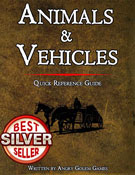Large beast (giant animal), unaligned
Armor Class 16 (Natural Armor)
Hit Points 32 (7d10-7)
Speed 10 ft., fly 120 ft.
Proficiency Bonus +2
Proficiency Bonus +4 (5th Edition Advanced Mode)
| STR | DEX | CON | INT | WIS | CHA |
|---|---|---|---|---|---|
| 18 (+4) | 16 (+3) | 8 (-1) | 1 (-5) | 7 (-2) | 3 (-4) |
Senses passive Perception 8
Challenge 1 (200 XP)
Dodge Missiles. The giant dragonfly imposes disadvantage against ranged attacks from opponents with a lower initiative score.
Hit and Run. The giant dragonfly can male an attack and take the dash action as a bonus action against a target with a lower initiative score.
Superior Reflexes. The giant dragonfly has advantage on initiative rolls and dexterity saving throws.
ACTIONS
- Multiattack. The giant dragonfly makes two attacks, one with its bite and one with its leg basket.
- Bite. Melee Weapon Attack: +6 to hit, reach 5 ft., one creature. Hit: 14 (3d4 + 4) piercing damage.
- Leg Basket. Melee Weapon Attack: +6 to hit, reach 0 ft., one creature. Hit: 6 (1d4 + 4) bludgeoning damage. If the target is Medium or smaller it is grappled (escape DC 14) and suffers the restrained condition. Until the grapple ends the giant dragonfly can automatically bite the target as a bonus action.
DESCRIPTION
Giant dragonflies are fearsome predators that hunt in the air with incredible speed and agility. Unlike their smaller relatives, which are mostly harmless to humans, these insects can pose a serious threat to any creature that is not bigger than them. Giant dragonflies are known for their dazzling metallic colors, which can range from green to blue to gold. Some of them have stripes or spots of different hues. All of them have two pairs of wings that are transparent and show dark veins on a shimmering amber membrane. A dragonfly’s legs are long and thin, but not very strong. They can only be used to perch on a branch or other surface. The legs are close together near the body, but spread out at the ends so that the dragonfly can use them to catch its prey in a large basket-like shape.
COMBAT
A giant dragonfly’s wings allow it to hover and dart with blinding speed. It can also dodge missile attacks with ease. When attacking tiny or small creatures, a dragonfly grabs its victim with its leg basket and eats it while flying. The prey suffers bite damage every round until it is completely consumed. When attacking larger creatures, a dragonfly bites with its mandibles as it flies past.
HABITAT / SOCIETY
Giant dragonflies are solitary and territorial, and will attack and eat anything they see. Sometimes, several of them may hunt in the same area and swarm less agile foes. However, they are also cannibalistic and will not hesitate to eat any wounded or weak members of their own kind.
ECOLOGY
Giant dragonflies mate and breed near water, where they prefer to hunt. However, they can fly long distances and may be found over dry land, far from water. They usually feed on other giant flying insects, but they will also take warm-blooded prey if they can. Giant dragonflies cannot survive in freezing temperatures, but they can live in almost any other climate except deserts. In tropical areas, giant dragonflies tend to grow even larger. These bigger specimens have different statistics (see parentheses).
Giant dragonfly eggs hatch in 12-20 days, depending on the temperature. The larvae live in water for about a year. In temperate climates, the larvae hibernate through the winter and emerge as adults the next spring.
A giant dragonfly’s skin is highly valued for its glittering, metallic appearance. It can be used for clothing and decoration. If preserved magically, it can sell for up to 600 gp per square foot (a typical specimen has six square feet of skin; tropical specimens have about eight square feet). A giant dragonfly’s wings have no special value.
Giant dragonflies can be used as mounts or pulling animals for vehicles.
The statistics are detailed in the D&D 5e Animals & Vehicles reference guide. Just have a look at the preview on DrivethruRpg.
